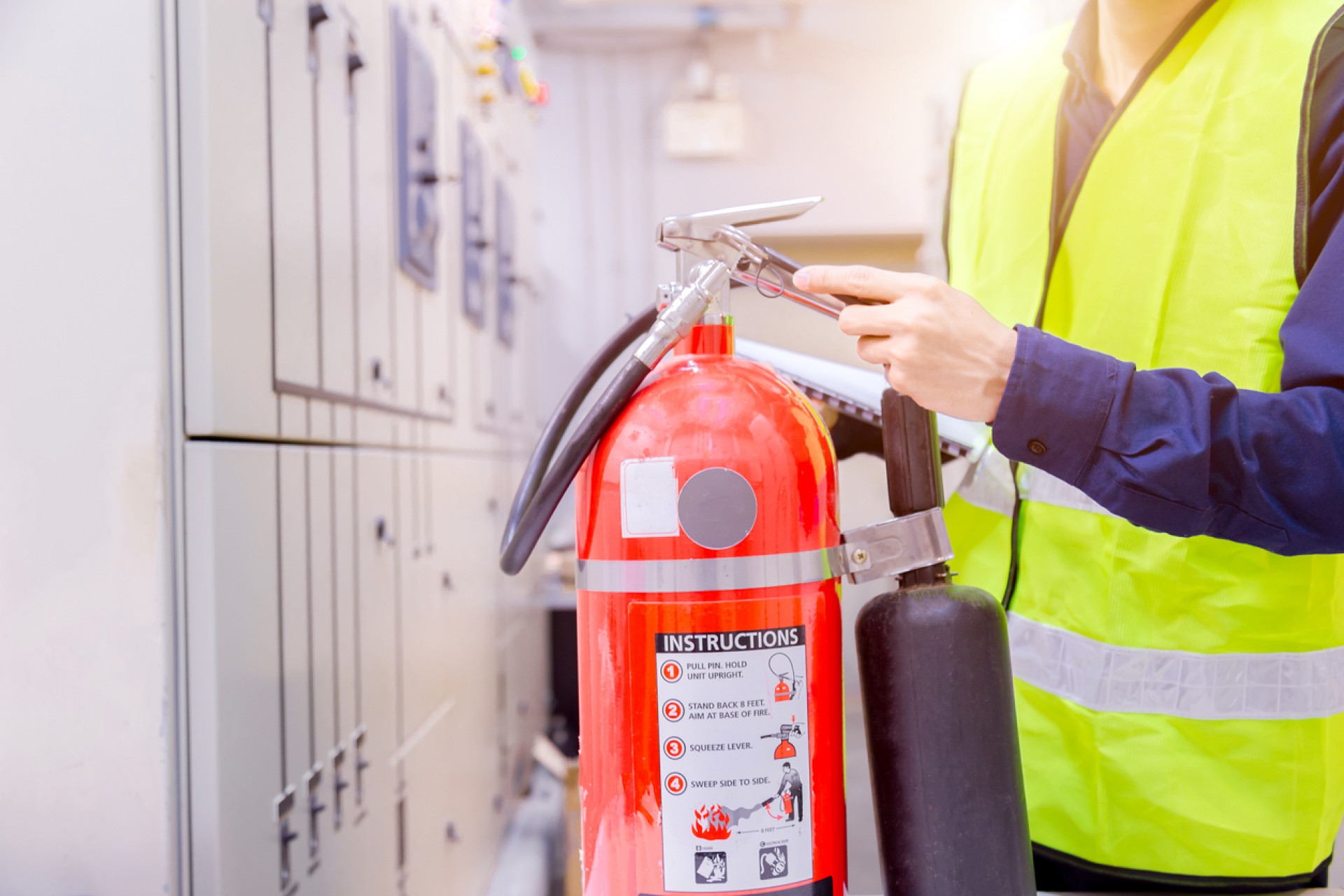Course Categories
Discover career-oriented training programs designed to enhance your professional skills and qualifications. Whether you are new to the field or looking to advance further, the courses are structured to meet your needs across various critical areas
Each category is designed to ensure you receive the latest information and practical knowledge, delivered by experienced professionals. Explore our courses to find the training that suits your career aspirations and helps you comply with industry regulations. Start enhancing your professional capabilities today!

Construction Training

CPCS

Fire Safety Training

First Aid Training

Health & Safety Training

IPAF Training

NPORS

Site Safety Plus

Working at Height
FAQs
Vocational Training and Apprenticeships
- Training Courses: Enrol in courses like bricklaying, joinery, or carpentry at colleges or training centres.
- Apprenticeships: Combine on-the-job training with classroom learning, earning while gaining practical experience.
Entry-Level Employment
- Labourer Positions: Start as a general labourer to gain hands-on experience and understand site operations.
- Work Experience: Seek internships or temporary jobs to build your resume and industry contacts.
CSCS Labourer Card
- Certification: Obtain the CSCS Green Labourer card by completing the CITB Health and Safety Awareness Course; essential for most UK construction jobs. It requires passing the CITB Health, Safety & Environment Test.
Professional Qualifications and Certifications
- NVQs: Pursue National Vocational Qualifications for recognised credentials in trades or management roles.
Higher Education
- Degree Programs: Consider a university degree for roles like civil engineering or construction management, leading to higher-level positions.
- Postgraduate Courses: Advanced degrees for specialised areas in construction.
Continuous Professional Development
- Further Training: Engage in ongoing training to stay updated with industry standards. Certifications in health and safety, project management, and machinery operation are valuable.
- Networking: Join professional bodies and attend industry events to network and stay informed about job opportunities and trends.
Specialised Training
- Health and Safety: Specialised training can lead to roles like Health and Safety Officer.
- Site Management: Training for roles like Site Supervisor or Site Manager through programs like SSSTS, or SMSTS.
Career Progression
- Starting Points: Entry-level roles can evolve into specialised trades, supervisory, and managerial positions with experience and additional qualifications.
- Advanced Roles: Consider roles like Construction Manager, Project Manager, or Health and Safety Manager as you gain experience and further certifications.
Utilise Career Resources
- Career Guidance: Seek advice from career services, industry bodies, and educational institutions to explore your options and plan your career path.
- Online Resources: Utilise blogs, forums, and online courses to supplement your learning and stay informed about industry developments.
By following these routes and utilising available resources, you can build a successful career in the construction industry
Basic health and safety training is crucial in any sector to ensure the well-being of employees and compliance with legal requirements. Here are the key components of such training:
1. Hazard Identification and Risk Assessment
Training helps employees identify common workplace hazards such as slips, trips, falls, electrical hazards, and hazardous substances. It also teaches how to assess risks associated with these hazards and implement appropriate control measures to mitigate them.
2. Personal Protective Equipment (PPE)
Employees learn about the importance and correct use of PPE, including helmets, gloves, safety goggles, and high-visibility clothing. Proper maintenance and use of PPE are essential to protect against workplace injuries.
3. Safe Work Practices
Training includes safe handling of equipment and materials, proper manual handling techniques to prevent musculoskeletal injuries, and ergonomic practices, especially for those working with display screen equipment (DSE).
4. Emergency Procedures
Employees are trained on how to respond to emergencies, including fire safety procedures, evacuation plans, and first aid basics. This ensures that everyone knows what to do in case of an accident or emergency.
5. Legal and Regulatory Requirements
Understanding the relevant health and safety legislation, such as the Health and Safety at Work Act 1974, is a core component of the training. This includes employer and employee responsibilities to maintain a safe work environment.
6. Health and Safety Culture
Promoting a positive safety culture where employees are encouraged to report unsafe conditions and participate in safety initiatives. This helps in creating a proactive approach to health and safety in the workplace.
Training Courses
Several organisations offer basic health and safety training courses tailored to different sectors. Examples of entry-level courses include:
- IOSH Working Safely: A one-day course suitable for all employees, covering essential health and safety topics in an engaging and accessible format.
- CITB Health and Safety Awareness: This course is a prerequisite for obtaining a CSCS Labourer card, essential for working on construction sites.
Continuous Learning and Assessment
Regular refresher courses and assessments help ensure that employees stay up-to-date with current health and safety practices and regulations.
By providing comprehensive health and safety training, employers can significantly reduce the risk of workplace accidents and ensure a safer working environment for everyone.
Yes, health and safety (H&S) training is a legal requirement. Employers are obligated under various laws and regulations to ensure that their employees are adequately trained to perform their work safely. Here are the key legal frameworks that mandate H&S training:
1. Health and Safety at Work etc. Act 1974
This act is the primary piece of legislation covering occupational health and safety in the UK. It places a duty on employers to ensure, so far as is reasonably practicable, the health, safety, and welfare of all their employees. Section 2 of the act specifically mentions the provision of information, instruction, training, and supervision necessary to ensure the health and safety of employees.
2. The Management of Health and Safety at Work Regulations 1999
These regulations require employers to assess risks and implement necessary measures to ensure health and safety. Regulation 13 requires employers to provide adequate health and safety training:
- On recruitment
- When risks change due to new equipment or processes
- To refresh skills and knowledge as appropriate
3. Industry-Specific Regulations
Certain industries have additional requirements for H&S training, such as the Construction (Design and Management) Regulations 2015, which require specific training for construction site workers to ensure they can work safely.
4. Control of Substances Hazardous to Health (COSHH) Regulations 2002
Employers must provide training on handling hazardous substances to prevent health risks associated with exposure.
5. Regulatory Guidance and Best Practices
The Health and Safety Executive (HSE) provides extensive guidance on the importance of H&S training and outlines best practices for compliance with legal requirements. Employers are encouraged to follow HSE guidelines to ensure they meet their legal obligations.
Summary
Health and safety training is legally required to ensure that employees can perform their duties safely and effectively. This includes initial training upon employment, updates when changes occur, and regular refresher courses. Failure to comply with these requirements can result in legal penalties, fines, and increased risk of workplace accidents.
For more detailed information, you can refer to resources from the Health and Safety Executive (HSE) and specific industry regulations.
The duration of CSCS training depends on the specific course you are taking to prepare for the CSCS exam. Here is an example:
CITB Health and Safety Awareness Course
- Duration: This is typically a one-day course lasting around 7.5 hours.
- Purpose: It provides a basic introduction to health and safety in construction, which is necessary for obtaining a CSCS Labourer card.
CSCS Test
- Duration: The CITB Health, Safety and Environment test, which is required to obtain a CSCS card, lasts approximately 45 minutes. It consists of multiple-choice questions.
Preparation and Study
- Self-study: The amount of time needed for self-study can vary. Many candidates spend several hours studying using revision materials, books, and online practice tests.
- Online courses: If opting for online courses, the duration can vary, with many courses designed to be completed at your own pace. Typically, these can be completed in a few hours to a couple of days, depending on the depth of the material and the candidate’s familiarity with the content.
Overall Time Commitment
- The total time commitment for CSCS training, including the one-day course and additional study time, generally ranges from 1 to 2 days, depending on the individual's prior knowledge and study habits.
1. Choose the Right Qualification
Identify the specific NVQ Level 2 qualification relevant to your job role in construction. Options include qualifications in trades such as bricklaying, carpentry, plastering, and more.
2. Find a Training Provider
Locate a registered training provider or college that offers the NVQ Level 2 in your chosen trade. Many training providers are available across the UK, and you can find lists of approved centres on websites like City & Guilds or Pearson.
3. Enrol in the Program
Enrol in the NVQ Level 2 program. You will be assigned an assessor who will guide you through the process. The assessor will visit your workplace to observe your skills and gather evidence of your competence.
4. Gather Evidence
Compile a portfolio of evidence demonstrating your competence in the specific trade. This evidence can include:
- Workplace observations
- Witness testimonies from supervisors or colleagues
- Photographs and videos of completed tasks
- Records of completed projects
- Written questions or assignments
5. On-the-Job Assessment
Your assessor will conduct on-site assessments to observe your practical skills and ensure they meet the required standards. These assessments are usually carried out during your normal work activities.
6. Complete the Required Units
You need to complete a set of mandatory units and optional units specific to your trade. The units cover various aspects of your work, such as health and safety, technical skills, and work planning.
7. Achieve Competence
Once your assessor is satisfied that you have met all the criteria for the NVQ Level 2, they will submit your portfolio and assessment records for final verification.
8. Certification
Upon successful verification, you will be awarded the NVQ Level 2 certificate. This qualification is recognised across the construction industry and can enhance your career prospects.
By following these steps, you can obtain an NVQ Level 2 in construction and advance your career in the industry.
Choosing the best course for building construction depends on your specific career goals and current level of experience. Here are some top courses to consider:
1. CSCS Certification Courses
- Overview: Essential for anyone looking to work on a construction site in the UK, particularly the CSCS Green Labourer card course, which includes health and safety training.
- Duration: The CITB Health and Safety Awareness course is a one-day course, while the CSCS test lasts about 45 minutes.
- Outcome: Allows entry-level workers to access construction sites and start their careers.
2. NVQ Level 2 in Construction Operations
- Overview: This vocational qualification is ideal for those seeking to gain practical skills and knowledge in construction trades such as bricklaying, carpentry, or plastering.
- Duration: Typically 2 to 3 months, depending on the pace of work and assessment.
- Outcome: Provides a recognised qualification that can enhance job prospects and allow for progression to higher levels.
3. HNC/HND in Construction and the Built Environment
- Overview: Higher National Certificates (HNC) and Higher National Diplomas (HND) offer more advanced studies in construction management, civil engineering, and building surveying.
- Duration: HNC typically takes 1 year full-time; HND takes 2 years.
- Outcome: Suitable for those aiming to move into management or technical roles in construction.
4. BSc in Construction Management
- Overview: An undergraduate degree focused on the management and oversight of construction projects, covering topics like project management, construction technology, and business principles.
- Duration: Typically 3 to 4 years full-time.
- Outcome: Prepares graduates for roles such as site manager, project manager, or construction consultant.
5. Apprenticeships in Construction
- Overview: Combines practical on-the-job training with classroom learning in various trades or construction management.
- Duration: Usually 2 to 4 years, depending on the level and trade.
- Outcome: Provides hands-on experience and formal qualifications, often leading directly to employment.
Selecting the Best Course
When choosing the best course for building construction, consider the following factors:
- Career Goals: Determine whether you aim to work in a trade, management, or a technical role.
- Current Qualifications: Select a course that builds on your existing knowledge and skills.
- Duration and Commitment: Consider how much time you can dedicate to your studies.
- Accreditation: Ensure the course is recognised by industry bodies and employers.
By considering these factors and exploring the recommended courses, you can choose the best path to start or advance your career in building construction.
Choosing between NPORS (National Plant Operators Registration Scheme) and CPCS (Construction Plant Competence Scheme) depends on various factors such as your employer's requirements, career goals, and the nature of the construction projects you work on. Both schemes have their own strengths and are respected in the industry.
NPORS (National Plant Operators Registration Scheme)
Advantages:
- Flexibility: NPORS offers flexibility in training and assessment. Training can be conducted on-site, which can be more practical and tailored to specific work environments.
- Cost-Effective: Generally, NPORS training and certification are more affordable compared to CPCS.
- Recognition: NPORS is widely recognised and accepted by many employers and contractors across the UK. It is increasingly becoming a preferred choice in the construction industry.
Considerations:
- Acceptance: While NPORS is gaining recognition, some large construction sites and employers may prefer or require CPCS certification.
- Training Standardisation: The flexible nature of NPORS means that training quality can vary between different providers.
CPCS (Construction Plant Competence Scheme)
Advantages:
- Industry Standard: CPCS is considered the industry benchmark for plant operator certification in the UK. It is widely recognised and often mandated by large contractors and major construction projects.
- Standardised Training: CPCS ensures a high level of competence and safety through standardised and rigorous training and assessment processes.
- Career Opportunities: Having a CPCS card can enhance your career prospects, providing access to more job opportunities and higher-profile projects.
Considerations:
- Cost: CPCS training and certification tend to be more expensive compared to NPORS.
- Training Location: CPCS training is typically conducted at approved centres, which may be less convenient than on-site training.
Comparison
- Recognition and Acceptance:
- CPCS: Highly recognised and often required on large construction sites and by major contractors.
- NPORS: Increasingly recognised and accepted, especially for smaller and mid-sized projects, and is a valid alternative for many employers.
- Cost:
- CPCS: Generally more expensive.
- NPORS: More cost-effective and affordable.
- Flexibility:
- CPCS: Less flexible, with training conducted at approved centres.
- NPORS: More flexible, with the option for on-site training.
- Training Quality:
- CPCS: Provides standardised and rigorous training.
- NPORS: Training quality can vary depending on the provider, but offers practical, tailored training.
Conclusion
Both NPORS and CPCS have their merits and are valuable certifications for plant operators. The choice between them should be based on your specific needs, the requirements of your employer, and the type of projects you intend to work on. CPCS may be preferable for those aiming to work on large, high-profile projects, while NPORS offers a cost-effective and flexible alternative that is widely accepted in the industry.
Both NPORS and CPCS provide credible pathways to certification, ensuring operators are skilled and competent to perform safely and efficiently on construction sites.
To provide effective first aid, various training courses are available, each tailored to different levels of need and specific environments. Here’s an overview of two popular courses in the UK:
1. Emergency First Aid at Work (EFAW)
Duration: This is a one-day course, typically lasting around 6 to 7 hours.
Content:
- Assessing the Situation: Understanding how to quickly and effectively assess emergency situations.
- CPR and AED: Basic training on cardiopulmonary resuscitation and the use of an automated external defibrillator.
- Choking: Techniques to help someone who is choking.
- Bleeding and Wounds: Managing and treating minor and major bleeding, including the use of dressings.
- Shock: Recognising and treating shock.
- Minor Injuries: Handling minor injuries such as small cuts, grazes, and minor burns.
- Recording and Reporting: Understanding the importance of recording incidents and the legal aspects of first aid.
Certification:
- Upon completion, participants receive a certification that is valid for three years. This course meets the requirements of the Health and Safety (First Aid) Regulations 1981.
2. First Aid at Work (FAW)
Duration: This is a more comprehensive three-day course, typically lasting about 18 hours over three days.
Content:
- Comprehensive Emergency Response: In-depth training on assessing emergency situations and prioritising treatment.
- CPR and AED: Detailed training on CPR for adults, children, and infants, along with AED use.
- Respiratory Issues: Treating choking, asthma attacks, and hyperventilation.
- Circulatory Issues: Managing heart attacks, angina, and shock.
- Wounds and Bleeding: Treating severe bleeding, embedded objects, and amputations.
- Fractures and Dislocations: Identifying and immobilising fractures and dislocations.
- Burns and Scalds: Treating various degrees of burns and chemical burns.
- Poisoning: Handling poisoning incidents, including ingestion, inhalation, and skin contact.
- Medical Conditions: Managing medical conditions such as epilepsy, diabetes, and anaphylaxis.
- Environmental Injuries: Treating hypothermia and heat stroke.
- Legal Aspects and Record Keeping: Detailed guidance on legal responsibilities and the importance of accurate record-keeping.
Certification:
- On successful completion, participants receive a certification valid for three years. This course also complies with the Health and Safety (First Aid) Regulations 1981.
Choosing the Right Course
- Emergency First Aid at Work (EFAW) is ideal for low-risk workplaces or where a first aider is required to manage only minor injuries.
- First Aid at Work (FAW) is better suited for higher-risk environments or workplaces with more complex first aid needs.
By completing these courses, individuals are well-equipped to handle emergencies and provide effective first aid in their workplaces.
The best certification for fire and safety depends on your specific needs, career goals, and the industry you work in. Here are some widely recognised certifications in fire and safety that are highly regarded across various sectors:
1. NEBOSH National Certificate in Fire Safety and Risk Management
Overview:
- Content: This certification covers the principles of fire safety, risk assessment, fire prevention, and the protection of people and property.
- Duration: Typically completed over a few weeks of part-time study or a shorter period of full-time study.
- Recognition: Widely recognised by employers globally and respected in various industries.
- Outcome: Equips individuals with the knowledge and skills to conduct fire risk assessments and manage fire safety protocols effectively.
Suitable For:
- Health and safety professionals
- Fire safety officers
- Managers and supervisors responsible for fire safety
2. IOSH Fire Safety for Managers
Overview:
- Content: Focuses on fire safety management, fire risk assessment, and emergency planning.
- Duration: Usually a one-day course.
- Recognition: IOSH (Institution of Occupational Safety and Health) is a well-respected body, and their certifications are recognised globally.
- Outcome: Provides managers with the understanding needed to manage fire risks effectively.
Suitable For:
- Managers and supervisors in any sector
- Those responsible for implementing fire safety policies
3. Fire Warden or Fire Marshal Training
Overview:
- Content: Practical training on fire prevention, emergency response, and the duties of a fire warden or marshal.
- Duration: Usually a half-day to one-day course.
- Recognition: Essential for roles requiring direct involvement in emergency response and fire drills.
- Outcome: Prepares individuals to act effectively during fire emergencies and to conduct regular fire safety inspections.
Suitable For:
- Designated fire wardens or marshals
- Employees responsible for workplace fire safety
Choosing the Right Certification
The best certification depends on your role and career goals:
- For comprehensive fire safety management knowledge, NEBOSH National Certificate in Fire Safety and Risk Management is highly recommended.
- For managerial roles, IOSH Fire Safety for Managers offers essential insights.
- For practical, on-site fire safety roles, Fire Warden or Fire Marshal Training is ideal.
By choosing the appropriate certification, you can ensure you have the necessary skills and knowledge to effectively manage fire safety in your workplace or advance your career in fire safety and risk management.
A Site Safety Plus course is a suite of health and safety training courses developed by the Construction Industry Training Board (CITB) in the UK. These courses are designed to provide workers, supervisors, and managers in the construction industry with essential knowledge and skills to ensure site safety and compliance with legal requirements. Here’s an overview of what the Site Safety Plus courses include:
1. Health and Safety Awareness (HSA)
- Purpose: This course is aimed at those who are new to the construction industry. It provides basic knowledge of health and safety, helping workers understand potential hazards on-site and the importance of safety measures.
- Duration: One day.
- Outcome: It is a prerequisite for obtaining the CSCS Green Labourer card.
2. Site Supervisors’ Safety Training Scheme (SSSTS)
- Purpose: Designed for first-line managers, such as supervisors, this course focuses on health, safety, welfare, and environmental issues. It also covers legal responsibilities and the importance of risk assessments.
- Duration: Two days.
- Outcome: Certification valid for five years, after which a refresher course is required.
3. Site Management Safety Training Scheme (SMSTS)
- Purpose: Aimed at site managers and those in charge of planning, organising, monitoring, controlling, and administering groups of staff. It covers all relevant legislation affecting safe working in the building, construction, and civil engineering industries.
- Duration: Five days.
- Outcome: Certification valid for five years, with a refresher course required to maintain the qualification.
4. Site Environmental Awareness Training Scheme (SEATS)
- Purpose: Provides supervisors and managers with an introduction to environmental issues on construction sites. Topics include waste management, pollution prevention, and the control of environmental impacts.
- Duration: One day.
- Outcome: Knowledge to improve environmental awareness and practices on-site.
6. Temporary Works Coordinator Training Course (TWCTC)
- Purpose: Aimed at those who are involved in temporary works, this course helps delegates understand the role of a Temporary Works Coordinator and ensures safety on sites where temporary works are being conducted.
- Duration: Two days.
- Outcome: Improved management and coordination of temporary works, with a refresher course required to maintain the qualification.
7. Temporary Works Supervisor Training Course (TWSTC)
- Purpose: Designed for supervisors of temporary works, this course helps them understand their role and responsibilities in ensuring temporary works are conducted safely.
- Duration: One day.
- Outcome: Enhanced ability to supervise temporary works effectively.
Benefits of Site Safety Plus Courses
- Compliance: Helps employers and employees comply with legal requirements.
- Safety: Reduces the risk of accidents and promotes a culture of safety.
- Career Advancement: Provides recognised qualifications that can enhance career prospects in the construction industry.
By completing Site Safety Plus courses, individuals in the construction industry can significantly enhance their knowledge and skills, leading to safer working environments and improved career opportunities.
IPAF training is designed to provide comprehensive instruction on the safe use of powered access equipment, such as Mobile Elevating Work Platforms (MEWPs). The training is recognised globally and is crucial for ensuring the safety and efficiency of operators working at heights. Here are the key aspects of IPAF training:
Purpose of IPAF Training
- Safety and Competence: The primary goal of IPAF training is to ensure that operators are fully competent and understand the safe use and operation of powered access equipment. This includes understanding the risks associated with working at heights and how to mitigate them.
- Legal Compliance: IPAF training helps employers and operators comply with health and safety regulations. In many countries, it is a legal requirement for operators of MEWPs to be properly trained and certified.
- Practical Skills: The training provides hands-on experience with various types of powered access equipment, including scissor lifts, boom lifts, and truck-mounted platforms. Operators learn how to conduct pre-use inspections, safe operating practices, and emergency procedures.
- Certification: Upon successful completion of IPAF training, operators receive a PAL (Powered Access Licence) card, which is widely recognised and often required on construction sites and by employers.
Types of IPAF Training Courses
- MEWP Operator Training: Covers the safe operation of different types of MEWPs, including scissor lifts (Category 3a) and boom lifts (Category 3b).
- MEWP Demonstrator Training: Focuses on the skills needed to demonstrate the use of MEWPs to others, including safe operating procedures and emergency measures.
- MEWP Instructor Training: Prepares individuals to become IPAF instructors, capable of teaching and certifying others in the safe use of powered access equipment.
- Load/Unload Training: Teaches the safe procedures for loading and unloading MEWPs on and off transportation vehicles.
- Harness Use and Inspection: Provides training on the correct use and inspection of harnesses when working with MEWPs.
Benefits of IPAF Training
- Enhanced Safety: Reduces the risk of accidents and injuries by promoting safe working practices.
- Improved Efficiency: Trained operators can work more efficiently, understanding how to properly use and maintain the equipment.
- Employer Confidence: Employers can be confident that their operators are competent and certified, reducing liability and ensuring compliance with legal standards.
By completing IPAF training, operators gain the necessary skills and certification to safely and effectively use powered access equipment, enhancing overall safety and productivity in the workplace.
The Health and Safety Executive (HSE) in the UK defines "work at height" as any work where a person could fall a distance liable to cause personal injury. This includes:
1. Working Above Ground/Floor Level
- Examples: Working on ladders, scaffolds, rooftops, or platforms.
2. Working in Areas Where There Is a Risk of Falling
- Examples: Near open edges, holes in floors, or fragile surfaces that could break under load, leading to a fall.
3. Working Below Ground Level
- Examples: Working in trenches, pits, or basements where a person could fall into.
Key Points from HSE on Work at Height
- Risk Assessment: Employers must assess the risks and take precautions to prevent falls.
- Planning and Supervision: Work at height should be planned, supervised, and carried out by competent people.
- Use of Equipment: Proper equipment should be selected and used, ensuring it is suitable for the task and properly maintained.
- Avoidance and Minimisation: Avoid work at height where possible. If it cannot be avoided, use measures to prevent falls or minimise the distance and consequences of a potential fall.
Legal Requirements
Under the Work at Height Regulations 2005, employers and those in control of any work at height activity must ensure:
- All work at height is properly planned and organised.
- A risk assessment is conducted, and appropriate work equipment is selected and used.
- Workers are competent and appropriately trained.
- The risks from fragile surfaces are properly controlled.
- Equipment is inspected and maintained.
HSE Guidelines
The HSE provides detailed guidelines and resources to help employers and workers understand their responsibilities and implement safe practices. For more comprehensive information, you can visit the HSE website:
By following these guidelines and regulations, employers can ensure that work at height is conducted safely, minimising the risk of falls and injuries.
To work at height safely, specific training is required to ensure that employees understand the risks involved and know how to mitigate them. Here are the key components of the necessary training:
1. Basic Work at Height Training
- Overview: This training covers the fundamental principles of working at height, including hazard identification, risk assessment, and the use of safety equipment.
- Content:
- Understanding legislation and regulations, such as the Work at Height Regulations 2005.
- Identifying common hazards and risks associated with working at height.
- Learning how to carry out a risk assessment.
- Safe use of ladders and stepladders.
- Emergency procedures and rescue plans.
2. Use of Personal Protective Equipment (PPE)
- Overview: Training on the correct use, inspection, and maintenance of PPE such as harnesses, helmets, and lanyards.
- Content:
- Selecting appropriate PPE for specific tasks.
- Proper fitting and adjustment of harnesses and other equipment.
- Regular inspection and maintenance of PPE.
- Understanding the limitations of PPE.
3. Ladder Safety Training
- Overview: Specific training on the safe use of ladders and step ladders.
- Content:
- Choosing the right type of ladder for the task.
- Inspecting ladders for defects before use.
- Setting up and using ladders correctly to prevent falls.
- Recognising and avoiding unsafe practices.
4. Mobile Access Tower Training (PASMA)
- Overview: For those using mobile access towers, PASMA (Prefabricated Access Suppliers' and Manufacturers' Association) training is essential.
- Content:
- Erecting, using, inspecting, and dismantling mobile access towers.
- Understanding the principles of stability and safety for mobile towers.
- Preventing common hazards associated with tower use.
5. MEWP Training (IPAF)
- Overview: Training for the use of Mobile Elevating Work Platforms (MEWPs), provided by IPAF (International Powered Access Federation).
- Content:
- Safe operation of MEWPs such as scissor lifts and boom lifts.
- Conducting pre-use inspections.
- Understanding and managing the risks associated with MEWP use.
- Emergency procedures and rescue plans.
6. Rescue and Emergency Procedures
- Overview: Training on how to respond to emergencies, including rescue techniques for workers who have fallen or are in danger.
- Content:
- Developing and practicing rescue plans.
- Using rescue equipment.
- Coordinating with emergency services.
7. Specialised Training for Complex Environments
- Overview: Additional training for working in more complex or high-risk environments, such as confined spaces or on fragile surfaces.
- Content:
- Specific risks and safety measures for complex environments.
- Use of specialised equipment.
- Detailed rescue plans for high-risk scenarios.
Certification and Continuous Learning
- Certification: Upon completion of training, participants typically receive certification that is recognised by employers and regulatory bodies. For example, successful completion of IPAF training results in a PAL (Powered Access Licence) card.
- Continuous Learning: Regular refresher courses and updates are essential to maintain competency and stay informed about new safety regulations and equipment.
By ensuring that workers receive comprehensive training tailored to their specific tasks and environments, employers can significantly reduce the risk of accidents and injuries associated with working at height.


